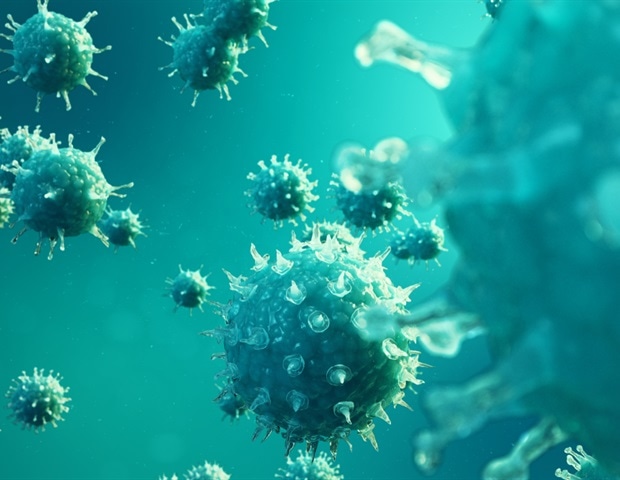Towards a malaria-free world: elimination of malaria and prevention of re-establishment in Tajikistan – World Health Organization (WHO)

Report on Tajikistan’s Achievement of Malaria-Free Status and Alignment with Sustainable Development Goals
Executive Summary
This report details the history and strategic implementation of malaria elimination in Tajikistan, culminating in its certification as malaria-free by the World Health Organization (WHO) in 2023. The nation’s success provides a significant case study for achieving key targets within the Sustainable Development Goals (SDGs), particularly SDG 3 (Good Health and Well-being). The strategies employed, rooted in multi-sectoral collaboration and sustained investment, offer a replicable model for other nations pursuing malaria elimination and advancing the global 2030 Agenda for Sustainable Development.
Strategic Interventions and Contribution to SDG 3
Tajikistan’s journey to eliminate malaria demonstrates a direct and impactful contribution to SDG 3: Good Health and Well-being, specifically Target 3.3, which aims to end the epidemic of malaria by 2030. The country’s success was built upon a foundation of targeted policies and meticulously organized public health interventions.
- Containment of Epidemics: Effective strategies were deployed to control major malaria outbreaks during the 1990s and early 2000s following the re-establishment of local transmission.
- Elimination and Certification: A systematic, long-term approach led to the complete elimination of malaria, resulting in official WHO certification in 2023.
- Maintaining a Malaria-Free Status: Post-certification, Tajikistan has maintained a robust surveillance and prevention framework, ensuring the country remains free from malaria and safeguarding the health gains achieved, which is crucial for the long-term success of SDG 3.
The Role of Partnerships and Sustainable Investment (SDG 17)
The achievement of malaria elimination was not solely a health sector victory but a testament to the power of collaboration, directly aligning with SDG 17: Partnerships for the Goals. The operational framework relied on a cohesive, multi-stakeholder approach.
- Coordinated Multi-Sectoral Effort: Success was driven by the integrated efforts of the national health system, various government sectors, international partners, and the active participation of the entire population.
- Well-Designed Interventions: The country implemented meticulously planned and organized public health programs tailored to local needs.
- Sustained Financial Investment: Long-term and consistent financial commitments were fundamental to supporting the extended campaign, from containment through to the prevention of re-establishment.
Broader Impacts on Sustainable Development
Eliminating malaria has wider implications for Tajikistan’s development, contributing to several interconnected SDGs beyond public health.
- SDG 1 (No Poverty) and SDG 8 (Decent Work and Economic Growth): By eradicating a major disease burden, Tajikistan has improved the health of its workforce, reduced healthcare costs for families, and created a more stable environment for economic development.
- SDG 10 (Reduced Inequalities): As malaria disproportionately affects vulnerable and rural populations, its elimination helps reduce health inequalities and promotes more equitable societal well-being.
Conclusion and Lessons for Global Health
The experience of Tajikistan in achieving and maintaining a malaria-free status serves as a critical resource for the global community. The documented strategies underscore that malaria elimination is an attainable goal that significantly accelerates progress toward the Sustainable Development Goals. The key lessons for other nations include the necessity of a strong political will, sustained investment, robust surveillance systems, and the cultivation of strong partnerships across all sectors of society, as outlined in SDG 17.
1. Which SDGs are addressed or connected to the issues highlighted in the article?
-
SDG 3: Good Health and Well-being
The article’s primary focus is on public health, specifically the elimination of a major communicable disease. The text centers on how “Tajikistan achieved malaria elimination” and was “certified malaria-free by WHO in 2023,” which directly contributes to the goal of ensuring healthy lives and promoting well-being for all.
-
SDG 17: Partnerships for the Goals
The article explicitly states that the success in eliminating malaria was not a singular effort but a collaborative one. It mentions that the achievement was due to the “coordinated efforts of the health system, other sectors, and the entire population,” which directly relates to the importance of partnerships in achieving sustainable development goals.
2. What specific targets under those SDGs can be identified based on the article’s content?
-
Target 3.3: By 2030, end the epidemics of AIDS, tuberculosis, malaria and neglected tropical diseases and combat hepatitis, water-borne diseases and other communicable diseases.
This target is directly addressed. The article details the history and evaluation of “policies and strategies applied to contain malaria epidemics” and ultimately “eliminate malaria.” The entire narrative is a case study of achieving this specific target.
-
Target 17.17: Encourage and promote effective public, public-private and civil society partnerships, building on the experience and resourcing strategies of partnerships.
The article identifies the mechanism for success as a multi-stakeholder partnership. The statement that elimination was achieved through “coordinated efforts of the health system, other sectors, and the entire population” is a clear example of the effective partnerships described in this target.
3. Are there any indicators mentioned or implied in the article that can be used to measure progress towards the identified targets?
-
Indicator 3.3.3: Malaria incidence per 1,000 population.
While the article does not provide specific numerical data on incidence rates, it strongly implies a definitive measurement of this indicator. The statement that Tajikistan was “certified malaria-free by WHO in 2023” means that the local transmission and, therefore, the incidence of malaria have been reduced to zero. This certification is the ultimate measure of success for this indicator.
-
Qualitative Indicator for Target 17.17
The article does not mention a specific quantitative indicator for partnerships. However, the successful outcome of malaria elimination serves as a powerful qualitative indicator of the effectiveness of the partnerships. The text attributes the achievement directly to these “coordinated efforts,” implying that the partnership model was successful and its effectiveness can be measured by the successful attainment of the health goal.
4. Create a table with three columns titled ‘SDGs, Targets and Indicators’ to present the findings from analyzing the article.
| SDGs | Targets | Indicators |
|---|---|---|
| SDG 3: Good Health and Well-being | Target 3.3: By 2030, end the epidemics of AIDS, tuberculosis, malaria and neglected tropical diseases… | Indicator 3.3.3: Malaria incidence per 1,000 population. (Implied by the country being “certified malaria-free,” indicating a zero incidence rate). |
| SDG 17: Partnerships for the Goals | Target 17.17: Encourage and promote effective public, public-private and civil society partnerships… | No specific quantitative indicator mentioned, but the success is attributed to “coordinated efforts of the health system, other sectors, and the entire population,” which serves as a qualitative indicator of effective partnerships. |
Source: who.int

What is Your Reaction?
 Like
0
Like
0
 Dislike
0
Dislike
0
 Love
0
Love
0
 Funny
0
Funny
0
 Angry
0
Angry
0
 Sad
0
Sad
0
 Wow
0
Wow
0















































































